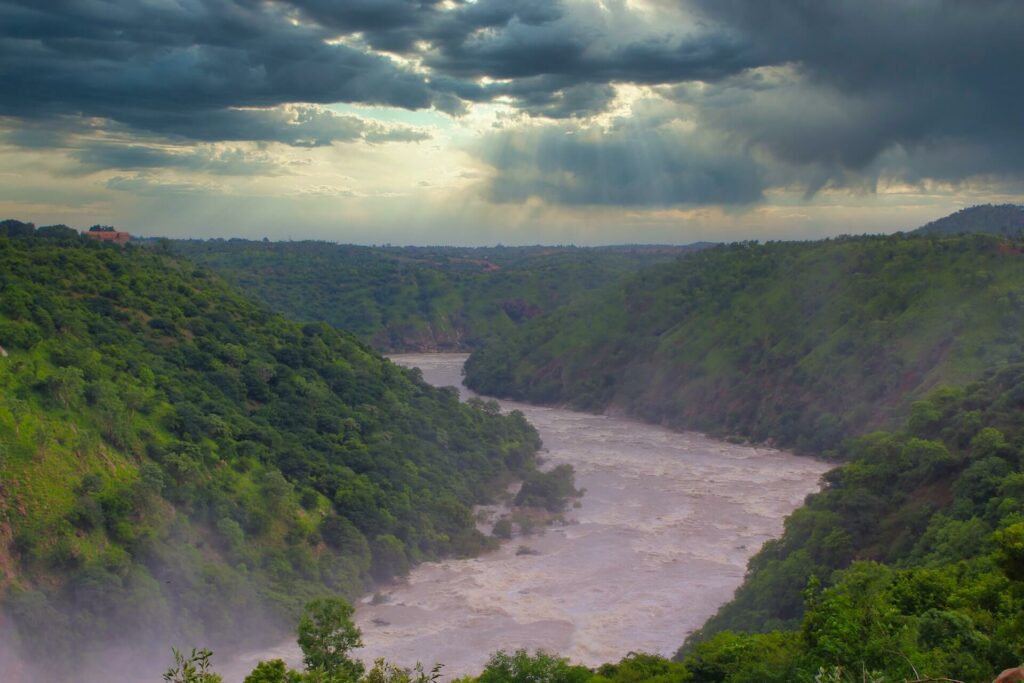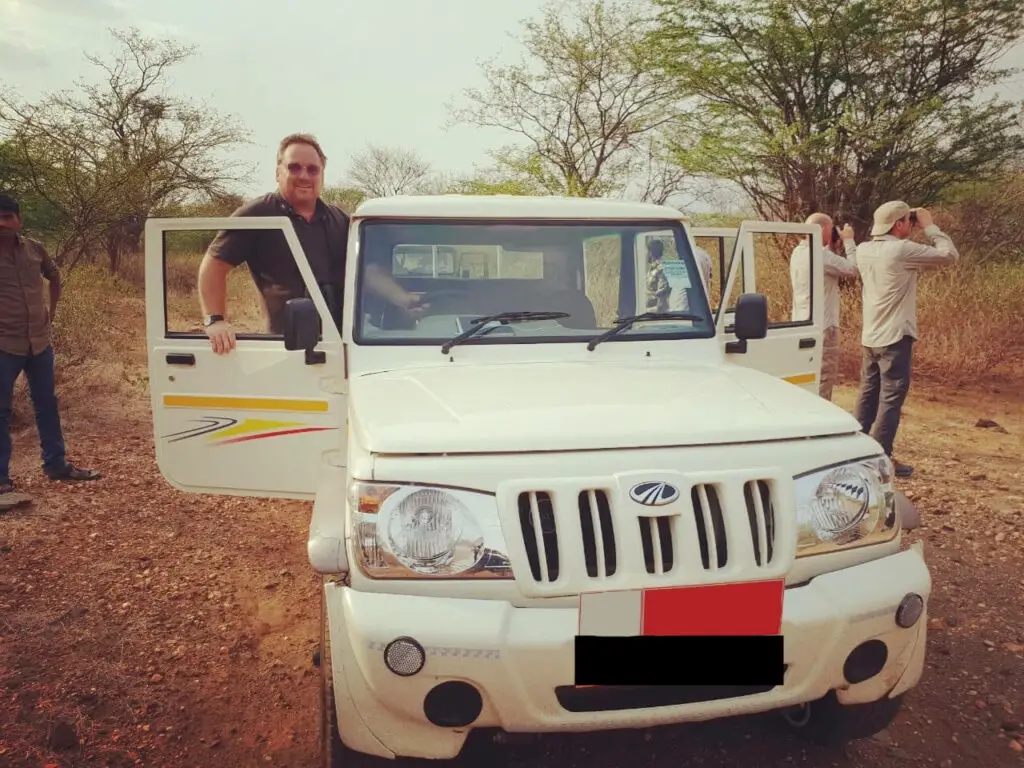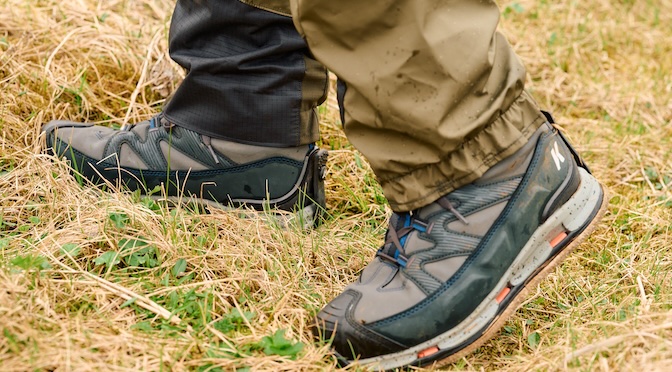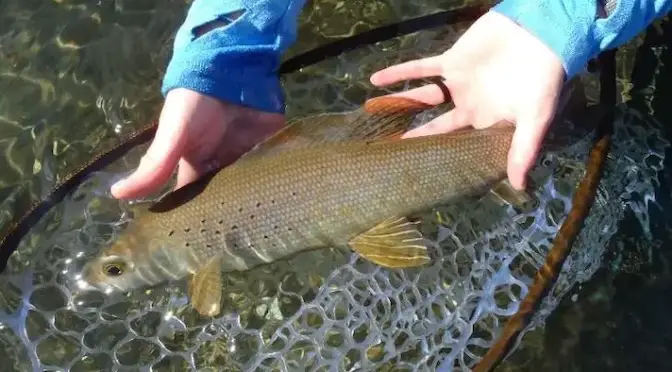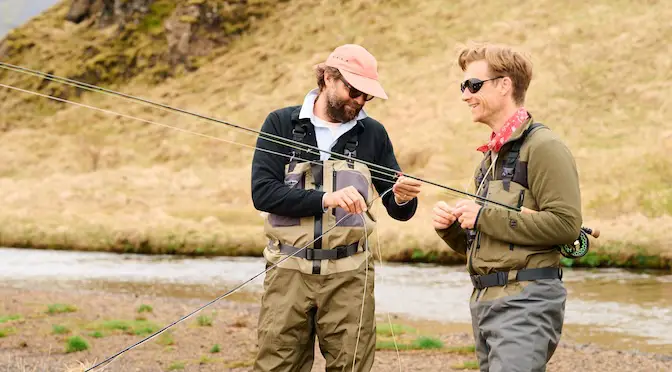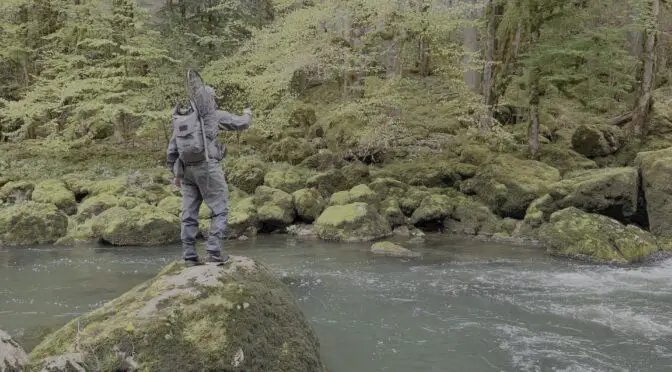Last updated on January 9th, 2024.
- On the Water with the Korkers Bantam Lite - June 26, 2025
- How to Find Trout in Rivers & Streams Anywhere - June 13, 2025
- Educating the Next Generation of Salmon Anglers - June 4, 2025
A new WWF report sheds light on the situation of freshwater fish. We talked to Shoal’s Mike Baltzer, about what needs to be done to secure a future for these fish.
Mike, according to the new WWF report, there are more fish species living in freshwater than in saltwater. Why is there less focus on them?
The immediately obvious reason is that freshwater fish aren’t afforded the visibility that marine fish are: rivers are often murky, silted and dark, making it challenging for film crews and photographers to take those beautiful images that can help encourage people to care about the species shown. People won’t care what they don’t know about, and they won’t know about things they can’t see.
Another point worth mentioning is a perceived lack of charisma among freshwater fish. Marine-focused organisations have done a wonderful job of highlighting the majesty and dazzling diversity of sea creatures, and people get excited by sharks and whales, manta rays and coral reefs. Sturgeon and catfish are a far more niche interest.
This perception is a communications issue as much as anything: there are utterly incredible freshwater fish that simply don’t get the airtime. Consider the frankly terrifying goliath tigerfish, the beautifully diverse and often flamboyant cichlids, or the truly remarkable Stimpson’s goby that can scale 300-foot vertical cliffs: all species with incredible stories behind them.
Fortunately, there are some excellent freshwater photographers and filmmakers doing some incredible work at the moment. Couple this with the increase in popularity in both angling and river snorkelling, and it feels like freshwater is due its moment in the spotlight.
We often talk about the need for freshwater to have its “Jaques Cousteau” moment, where the public is brought beneath the surface to discover the astonishing beauty that lives there. Part of Shoal’s strategy is to help uncover this world of wonder and communicate it in the hope that people will be more inclined to care for freshwater conservation.
The population of migratory fish such as salmon have suffered dramatically over the last decades. Especially “megafish” have seen a drastic decrease. What are “megafish” and what is their importance to the ecosystems?
Freshwater megafish are any fish species that can weigh more than 30kg and grow to at least 2 metres in length. The Mekong giant catfish, arapaima and giant freshwater stingray are all examples.
They are typically voracious herbivores or top predators, and they function as keystone species, influencing the other species in the ecosystem.
Many megafish are migratory, and the species that migrate long distances are key sources of nutrient transport between widely dispersed habitats. They can support conservation by serving as flagship species, helping to spur action for additional species. They are also often the first species to be affected by threats like overfishing, dams, and pollution, so their status is a strong indicator of river health. As the big fishes disappear, it is a clear sign that the smaller fishes are also at risk.
What are the main reasons for the staggering decrease in freshwater fish?
The decline is due to a number of reasons, including habitat loss, damming / river fragmentation, pollutants, water abstraction, overfishing, wildlife crime, invasive species and climate change. One of the underlying reasons is again negligence. Fish are overlooked, considered simply as a resource for recreation or food.
Each of these points alone would damage species populations, but many species face a number of these threats concurrently, so it is easy to understand why freshwater fish face these mammoth challenges to their survival. With around one in three freshwater fish species being threatened with extinction, freshwater biodiversity is more imperilled than marine or terrestrial counterparts – it has been described as ‘the sharp end of the biodiversity crisis’.
Our recently published Forgotten Fishes report goes into excellent detail about this.
There are two main concepts in conserving endangered fish species around the globe. The focus is either on restoring ecosystems or protecting the ones that are still intact. Is one better than the other?
Both of these approaches have their role in fish conservation. Where the ecosystems are still intact and possibly under threat, the best and cheapest option is to protect them from any further pressures. There are many ways that this can be done and still provide opportunities for other uses. Protection doesn’t necessarily mean halting access or use by people. In fact, freshwater conservation has been the model for how to manage natural ecosystems for nature and for people.
When an ecosystem has already suffered from degradation or the fish populations have been reduced for one reason or another, then restoration is required. Restoring ecosystems can take a long time and can be expensive, so it is always best to prevent degradation rather than restore when the option is still there. Restoration programmes, however, can be very rewarding and inspirational. There is nothing like seeing ecosystems returned back to their natural state or to see fish populations return where they had been lost before. Restoration activities can provide a real boost to local economies and provide new sources of protein in some of the poorest areas of the world.
Together with the WWF you at Shoal Conservation are introducing an “Emergency Recovery Plan for Freshwater Biodiversity”. What is the idea behind this?
The Emergency Recovery Plan for Freshwater Biodiversity was introduced by WWF in the Living Planet Report they released last year. It was devised by a global team of scientists and policy experts to recommend what can be done to ‘bend the curve’ of devastating species decline. Bending the curve has been used to show how incremental actions can be applied to dramatically change the trajectory of a crisis. It has been used for climate change and recently successfully for tigers.
It is broken down into 6 key points, which together address the reasons for species population declines outlined above. Each of them are practical actions that have already been implemented somewhere in the world. They are:
Allowing rivers to flow more naturally
Reducing pollution
Protecting critical wetland habitats
Ending overfishing and unsustainable sand mining
Controlling invasive species.
Safeguarding and restoring connectivity.
The idea is that highlighting these techniques – which have already been proven to work – will help instigate meaningful change on a policy level: if countries commit to the plan, they will enhance the health of their rivers, lakes and wetlands, and ultimately secure the future of their fish.
What role can fly fishermen and women and anglers in general play in this undertaking?
Anglers and fly fishers have a natural interest in the conservation of the fishes that they love so much. It won’t be a surprise to readers of The Wading List to hear that it is the third most popular sport in the US, after running and jogging, and that 13 % of the population there identify as inland recreational anglers. There are similar numbers in Europe, with 9 million EU citizen recreational anglers, and the hobby is growing in popularity. Yet many of these anglers may not be thinking with a conservation hat: they may simply not realise the extent of the challenge. If we could get the angling community on board with freshwater conservation, especially in places where they don’t yet necessarily fish, we could achieve real impactful lasting change together.
Furthermore, billions of dollars are generated each year through angling. If even a tiny fraction of this went towards funding freshwater conservation projects, perhaps via a 1 per cent donation from the sale of angling equipment, the conservation sector would be well equipped to deal with the challenges head on.
On a more local level, the investment into communities from angling tourism incentivises the locals to maintain healthy freshwater ecosystems and fish populations: it benefits both people and fish. Take the hump-back mahseer as an example. It has been luring anglers to India’s River Cauvery since the 1970s. The income generated from international anglers has supported the transformation of former poachers into angling guides and river guardians, incentivised to protect the mahseer and their lucrative new income stream.
Shoal Conservation was originally established after it was recognised that there is huge opportunity to engage anglers in freshwater conservation. It hasn’t yet been done on a global scale, but it could be a real game-changer for threatened freshwater species. Anglers can take the lead where the established conservation organisations have failed until now.
What are the challenges in coordinating such a global project?
First and foremost, it is all about engagement. For every angler we can inspire to take more interest in the conservation of fishes – either where they fish every day, or where they dream of fishing, and perhaps even in places they may never get a chance to visit – we are taking a great step forward. Reaching out to this community is vital and the sooner we can do that, the better. Interviews like this are a wonderful way to engage with anglers. Anglers have been an important influence on decision-makers and have succeeded in keeping many clean, healthy rivers and maintaining rich fish stocks. We hope we can encourage them to do that across the globe.
Ultimately, conservation costs money and this is perhaps our greatest challenge. We need to find the funds to support action for the most threatened species. Fortunately, a big difference can often be made with small amounts of money. The problem is that we have a big backlog of species that need our attention. As I mentioned earlier, however, it may be possible to raise the funds from millions of small donations connected to when anglers buy their equipment. A few cents on a lure or a dollar on a rod donated to Shoal would be a huge contribution. We can match those funds with other conservation funds and support action for hundreds of fish across the world. We now just need to reach out to the companies and hope that they can find the way to get their customers on board to support us. Perhaps a collaborative effort by an alliance of companies might be a way forward.
Saying all that, we will do it. We have to. It is time the freshwater species crisis is challenged, and I believe anglers can be the difference we have needed for a long time.
Learn more about Shoal, and how it is tacking the freshwater biodiversity crisis, at shoalconservation.org and on Twitter @Shoal_Org.



